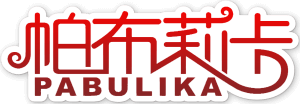闻笛[1]
赵嘏
谁家吹笛画楼[2]中?
断续声随断续[3]风。
响遏[4]行云横[5]碧落[6],
清和冷月到帘栊[7]。
兴来三弄有桓子[8],
赋就一篇怀马融[9]。
曲罢[10]不知人在否,
余音嘹亮尚飘空。
注释:
[1] 《千家诗》注说:“遏,止也;碧落,青天也。晋桓伊善吹笛,汉马融作笛赋,皆用笛事也。此首言谁于楼上吹笛,其声悠扬,随风而至;其响彻于云霄,其韵清和,透入帘栊之内。不减桓伊之兴,端称马融之赋也。一曲已终,其人不见,惟闻飘空嘹亮之音而已。”这是一首赞美吹笛人的诗。
[2] 画楼:装饰华美的楼阁。
[3] 断续:断断续续,时有时无。
[4] 遏:阻止。
[5] 横:飞越。
[6] 碧落:青天。
[7] 帘栊:窗帘和窗棂。
[8] 桓子:东晋人桓伊,善吹笛,曾为王徽之吹笛三曲,曲终人不见。
[9] 马融:东汉文学家,写有著名的《长笛赋》。
[10] 曲罢:一曲结束。
Hearing the Flute
Zhao Gu
Who’s playing on the flute in painted bower with ease?
Intermittent songs float with intermittent breeze,
So as to stop floating cloud in the sky green,
So clear as to bring moonlight to the window screen.
Three tunes are played by the flutist in spirits high;
An ode is written to the flute heard far and nigh.
When ends the tune, I know not if the flutist’s there;
I only hear its echo wafting in the air.
《闻笛》是唐代诗人赵嘏创作的一首七律。此诗专写笛声之妙。首联交待笛声的由来,颔联用响遏行云和随月入窗正面描写笛声,颈联引用古事以作侧面衬托,尾联用余音绕梁和人在否二意构画出一幅清空的艺术境界。
The poem “Hearing the Flute” is a seven-line poem written by the poet Zhao Long in the Tang Dynasty. This poem is dedicated to the wonderful sound of the flute. The first couplet describes the origin of the sound of the flute, the first couplet describes the sound of the flute in a positive way with the sound of the clouds and the moon entering the window, the neck couplet quotes ancient events as a side setting, and the last couplet uses the afterglow and the two meanings of people in the no to paint a clear and empty artistic realm.

















